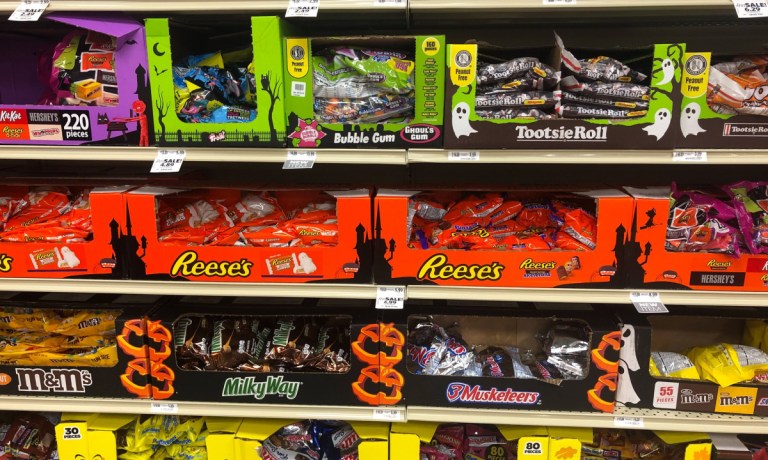Consumers Rethink Halloween Candy-Buying Strategies Due to Rising Prices

The rising cost of candy has reportedly led consumers to rethink their Halloween plans.
Candy and gum prices rose by 7.5% in September compared to the same period last year, reflecting the overall trend of increasing costs, The Wall Street Journal (WSJ) reported Friday (Oct. 27), citing data from the U.S. Bureau of Labor Statistics.
The National Retail Federation predicts Americans will spend a record-breaking $12.2 billion on Halloween-related expenses this year, including candy, costumes and other items, according to the report. This represents a 15% increase from the previous year. Candy alone is expected to account for $3.6 billion in spending, marking a 16% increase from 2022.
Several factors contribute to the rising costs of candy, the report said. One major factor is the skyrocketing price of cocoa, the key ingredient in chocolate. Financial services firm ING reports a 61% increase in cocoa prices this year, primarily due to persistent rain delaying cocoa harvesting in major producing countries like Ghana and Cameroon. S&P Global Market Intelligence reveals that the value of chocolate imports into the U.S. increased by 16% in August compared to the same period last year.
Chocolate producers are feeling the pinch of rising cocoa prices, per the report. Mars, maker of candies such as Skittles and M&Ms, acknowledges the challenges posed by high inflation and spikes in material costs. While Mars has absorbed some of these additional expenses, grocery stores and other retailers ultimately set their own prices.
The escalating price of candy is impacting individual households as well. Consumers interviewed for the WSJ report said they are actively seeking candy bargains; using coupons; shifting from organic, allergy-friendly candy to cheaper traditional candy options; limiting each trick-or-treater to one piece of candy; and buying less candy to hand out during the holiday.
Snacks and confectionery giant Hershey has found that there are limits to what shoppers are willing to pay for chocolate, after previously maintaining that chocolate was an affordable luxury that consumers would continue buying even as prices rose, PYMNTS reported in July.
When reported second-quarter results in July, the firm said that in its North American Confectionery segment, organic volume/mix was down 4%.
“The volume impact really is driven by the extra price impact,” Hershey Senior Vice President and Chief Financial Officer Steve Voskuil said at the time.
PYMNTS Intelligence has found shoppers are skipping the snack food aisle to lower their grocery bills. Fifty-seven percent of consumers said they have cut down on nonessential grocery spending, according to “Consumer Inflation Sentiment Report: Consumers Cut Back by Trading Down.”